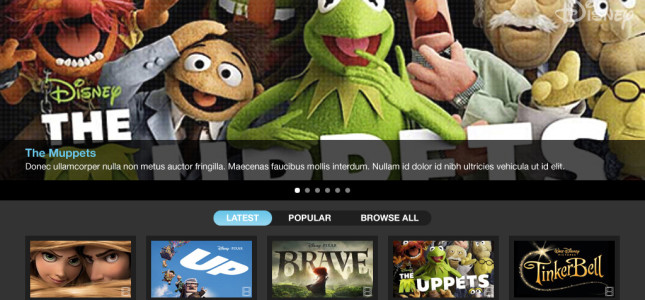So you have video or music content and you want to stream it online like Netflix, Hulu, Spotify, Google Play or Apple TV.
For any start-up IPTV / OTT / Music streaming businesses the processes of scoping, planning and making the choice of developing or outsourcing the development of your OTT platform can very challenging. Most businesses entering the video streaming market come from traditional broadcast, cable and music publishing but we are also seeing new players like ISPs, Telcos and cloud service providers grabbing new market share. For most of these businesses the transition to digital content delivery raises a lot of difficult questions. Here’s a list of some of the most common questions our solution architects get asked:
- What hardware do we require to encode video and audio content?
- What size infrastructure will we require to store the assets and metadata?
- What size infrastructure will we require to host the frontend applications and deliver the content?
- Should we use cloud or local infrastructure?
- Do we need a Content Delivery Network (CDN)?
- Is Amazon Cloudfront the same as Akamai?
- What software will we require to manage the content?
- What software will we require to manage subscriptions or pay per view?
- What software will we require to manage user access?
- What are the best video players?
- Can we schedule content using our EPG?
- How many bitrates should we encode our video or music files?
- Should we encode all our videos for MPEG DASH / HTML5 delivery?
- How do we monetise our content with targeted advertising?
- How do we track revenue for royalties reporting to studios?
- How do we track and target users?
- Should we integrate Omniture, Google Analytics, comScore, Nielson reporting?
- Can we use A/B testing?
- What DRM will we require to meet studio requirements?
- What DRM will work on all browsers and native applications?
- How do we protect download content?
- How many apps will we need so our content plays on every device?
- How much will it cost encode, secure and deliver each video?
- How much should we charge the users for subscription content?
- How do I get the metadata provided by the content owner into our OVP or CMS system?
- Do we need a content management system, asset management system or just an OVP?
- Can we control which geographic regions content is available?
- Can we control which content is available on each device?
- How do we stream live content?
- Can we structure content by channel, genre, popularity, latest, A-Z, studio, artist etc?
- Which device is the most popular for viewing video content?
- Can I use my existing Content Management System to stream videos?
- How do we make our solution more future proof?
- How do we make our video applications meet WCAG 2.0 Level AAA accessibility compliance?
That’s a long list of questions right? Since technology marches forward your project consultants, hardware and software vendors need to frame their answers, to the above questions, around variables like:
- project budget
- time to market
- technology roadmaps / future proofing
- your technical human resources
- your physical technology resources
- your projected number of viewers / subscribers
- your content refresh rate per month
- your studios / license owners security requirements
- your studios / license owners monetisation requirements
- your target market
- your target devices
Customers and their consultants & software vendors have a difficult job to strike a balance between budget, speed to market and selecting a future proof technology platform. Making the wrong decision has severe consequences.
Here’s a few ways things that can go wrong:
- Choosing the wrong infrastructure that doesn’t scale or locks you in to paying for capacity you aren’t using
- Encoding your entire library of content without sufficient visibility of emerging standards such as HTMl5, browser plugins and DRM
- Fragmenting your application frameworks trying develop on a wide range of new hardware manufacture SDKs that are frequently unstable, have little developer support and are likely to change rapidly
- Not understanding the potential myriad of transactional costs related to the content publishing workflow from ingest, encode, encryption, storage and delivery
- Trying to be exactly like Netflix, Hulu or Google Play and burning through your budget trying to support every device, browser or screencasting solution
- Encoding and storing too many formats or too few formats
- Not being prepared for the complexities of receiving multiple variations of metadata schema from studios and the challenge of mapping this data into your publishing system
- Selecting too many specialized systems such as: File transfer, DVN, Encoding, OVP, DAM, CMS, CDN, Players, User Management, Payment Gateway, Display Advertising, Video Advertising, Social Sharing, Metadata Enrichment, Recommendation Engine, EDM, Analytics, Support ticketing, SAP, A/B Testing & Monitoring ….ah the integration, maintenance & cost can be mind boggling
What are the answers?
There are no magic bullets, the technology is simply evolving at a speed where you can only plan to minimize exposure to orphaned or uncertain technology roadmaps. Instead put your time and money towards reaching 80% of the audience with 20% of the cost and effort rather than trying to reach 100% of the audience through an extra 80% effort and cost. The money you save can keep your IPTV business alive long enough to see the new technologies emerge. Spend your savings on good content. There will be compromises to cater for transitioning technology standards. Right now you can’t choose one DRM solution unless you are willing to forgo support of certain devices. If you want optimal playback experience across all browsers you’ll need to settle for more encoding formats and a combination of player technologies. Try to find media publishing system that can support end-to-end workflow to reduce your integration and maintenance costs. Try to find a vendor that has experience developing applications across devices so you can leverage their existing code libraries and avoid common issues. Explore your infrastructure options keeping in mind there are trade offs between owning and maintaining locally hosted hardware v’s cloud services. To get the full value from locally hosted hardware you need to be using at least 80% capacity 100% of the time and have a good technical support team to keep it running efficiently. If your encoding volumes and traffic patterns are spiky you can save substantial money using a pay as you go cloud service, particulary if you can reliable size your minimum infrastructure requirements, because the cloud service providers will allow you reserve hardware by paying a little more upfront to receive substantial transactional volume discounts. If you want more answers rather than questions we are happy to help, so give us a call.

